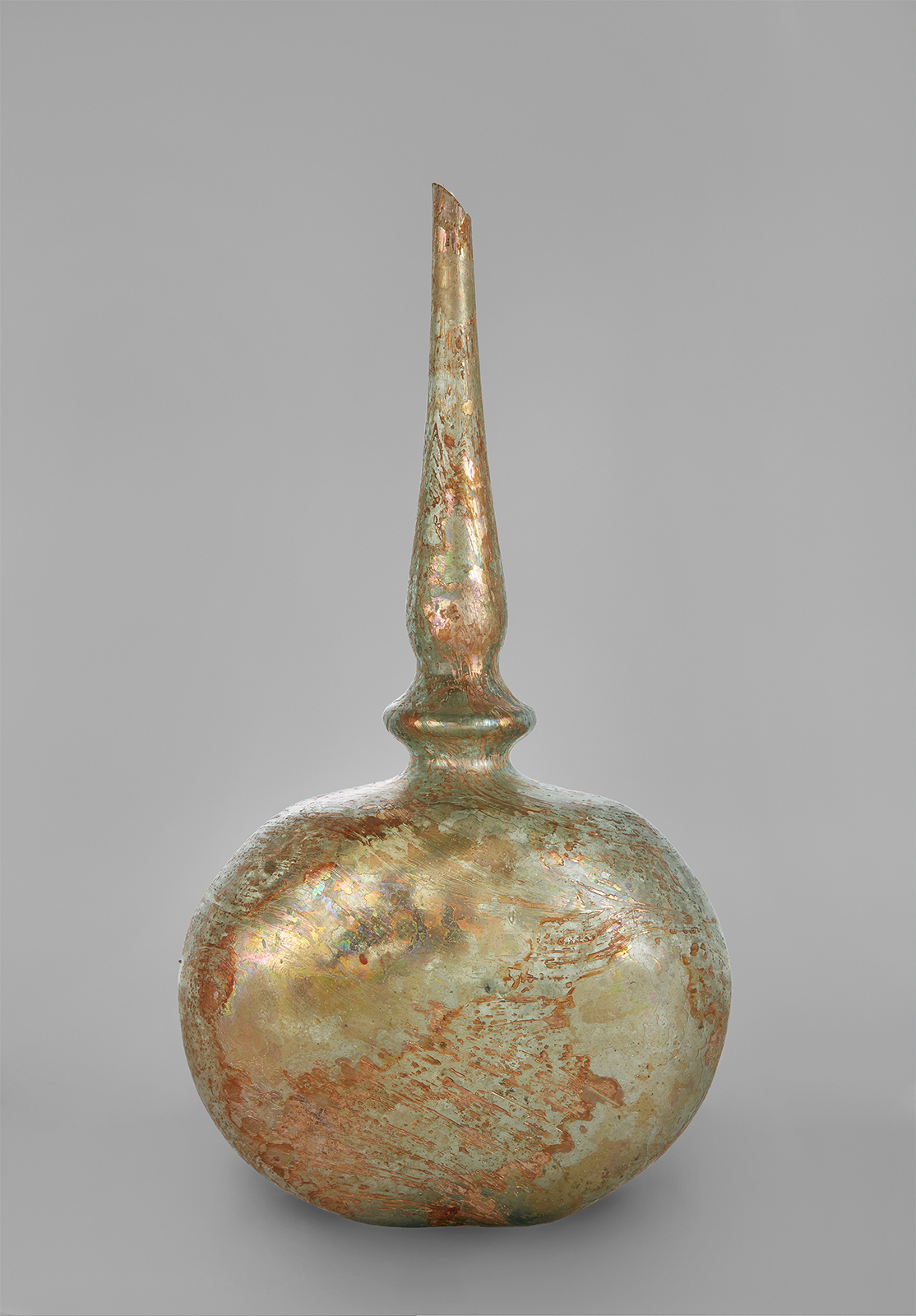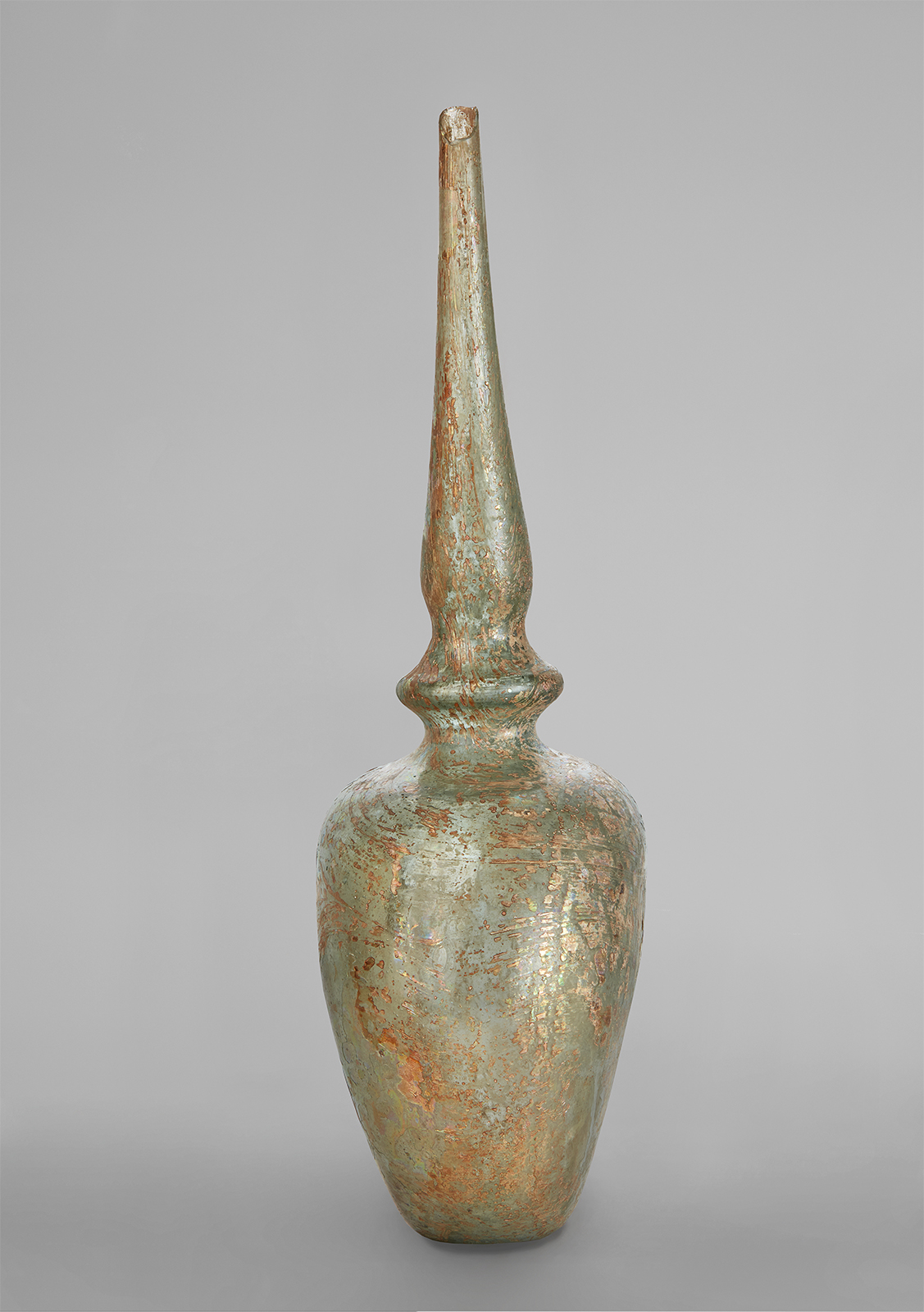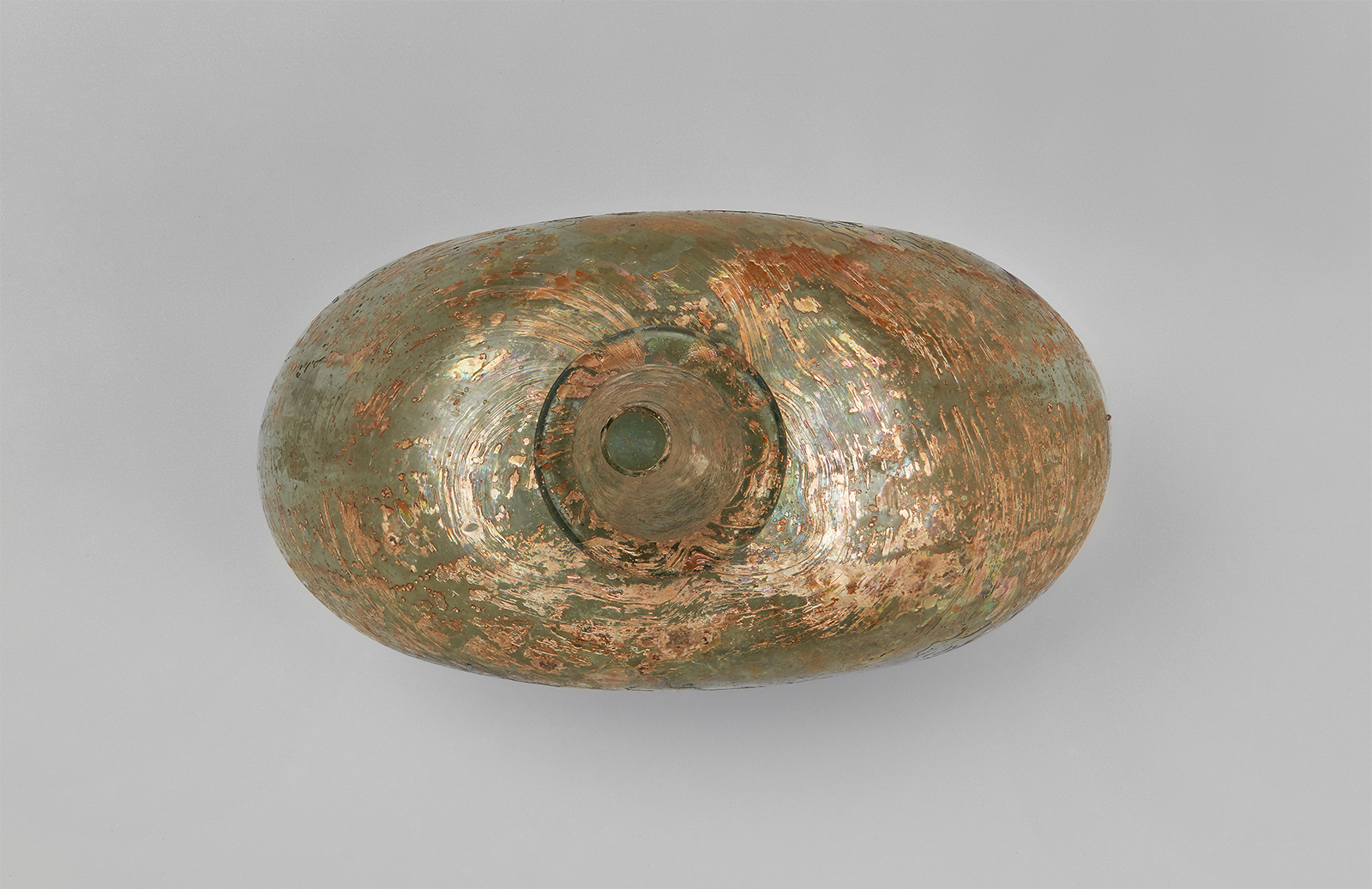Click on the image to zoom
Perfume sprinkler
- Accession Number:2017.1.1
- Place:Egyptian or Syrian region
- Dimensions:Height: 23.0 cm; Diameter: 13 cm
- Date:12th–13th century
- Materials and Technique:glass, greenish, thin patchy silvery iridescence; free blown and tooled, worked on the pontil
This vessel from the Aga Khan Museum Collection has the typical features of a perfume sprinkler, a glass vessel created to hold and dispense perfume: a globular body that has been flattened on two sides and a long tapering neck with a bulge near its base. The bottom of the body has a shallow kick marked by the pontil, a hot metal rod with some glass attached to it. This was necessary to manipulate the details of the vessel and the neck, parts of which are missing.
Further Reading
The best-known glass sprinklers were especially popular in the Egyptian and Syrian region. They seem to have been first produced in Egypt during the Fatimid period (969–1171) before the fashion spread to Syria during the Ayyubid (1171–1250) and Mamluk periods (1260–1517). Undecorated pieces were made in 12th-century Syria for utilitarian purposes. From the mid-12th century until the 14th century, sprinklers were made for wealthier patrons and decorated in a variety of ways. Perfume bottles were called omon or qumāqim (singular qumqum) in Arabic. This is one of the few names for glass vessels that we know today.
Though glass sprinklers share certain features, their diversity confirms that glass artisans found diverse aesthetic solutions. Different vessel sizes were blown in large numbers from thin glass. Because of the bottles’ fragility, many of these were destroyed during transport and certainly in times of unrest. Some sprinklers were rather small, but others—such as this fine example in the Aga Khan Museum Collection—were quite large. Some had small handles tooled into a snakelike pattern that flanked the lower part of the neck. An example in the Metropolitan Museum of Art demonstrates that another type of sprinkler received a foot. Its ring-like body probably made it easier to sprinkle drops of perfume.[1] Many if not most examples were probably of colourless glass and plain. Some, however, were blown in coloured glass or had moulded and ribbed decoration.[2]
Besides these types of sprinklers, a large number of other known examples were blown from thick glass and had marvered decoration with differently coloured trails tooled to a pattern [3] or decorated with enamelled painting. These sprinklers were mainly produced during the Ayyubid (1171–1250) and Mamluk (1260–1517) periods. Some of the plain as well as the enamelled sprinklers were small since they served a single person and could be taken on journeys to other places. A fine enameled example is in the Corning Museum of Glass.[4]
Sprinklers are mainly known from the central region of the Islamic world. It is probable, however, that other types of bottles from the Iranian region may have been used for similar purposes. To a certain extent, the habit of using sprinklers continued in later periods. In the 18th and 19th centuries, bottles in bright colours such as purple or emerald green were popular in Iran and especially in India for rose-water sprinklers. As examples from the al-Sabah Collection in Kuwait show, they have globular bodies with vertical ribs and two bulges near the base of the neck and were possibly made in Europe for the Indian market.[5]
— Jens Kröeger
Notes
[1] Jenkins, 34–35, no. 42
[2] Carboni, 150–151, no. 37a-b; Carboni and Whitehouse, 73, no.3; Goldstein, 250–251, no. 289-290.
[3] A good example of this type of sprinkler is in the Toledo Museum of Art. See Carboni and Whitehouse, 142–143, no. 58 (marvered).
[4] Carboni and Whitehouse, 246-247, no. 122 (Syria ca. 1260–77).
[5] Carboni, 391–393 no. 107a-j; Carboni and Whitehouse, 289–290, no. 143–144.
References
Carboni, Stefano. Glass from Islamic Lands. The Al-Sabah Collection. Kuwait National Museum. New York: Thames and Hudson, 2001. ISBN: 9780500976067
--- and Whitehouse. Carboni, with contributions by Robert H. Brill and William Gudenrath. Glass of the Sultans. New York: The Metropolitan Museum of Art; Corning, NY: The Corning Museum of Glass; Athens: Benaki Museum; New Haven: Yale University Press, 2001. ISBN: 9780300088519
Goldstein, Sidney. Glass From Sasanian Antecedents to European Imitations, Nasser D. Khalili Collection of Islamic Art XV. London: The Nour Foundation in Association with Azimuth Editions, 2005. ISBN: 9781874780502
Jenkins, Marilyn D., “Islamic Glass: A Brief History.” The Metropolitan Museum of Art Bulletin 54, no. 2 (1986).
Note: This online resource is reviewed and updated on an ongoing basis. We are committed to improving this information and will revise and update knowledge about this object as it becomes available.






